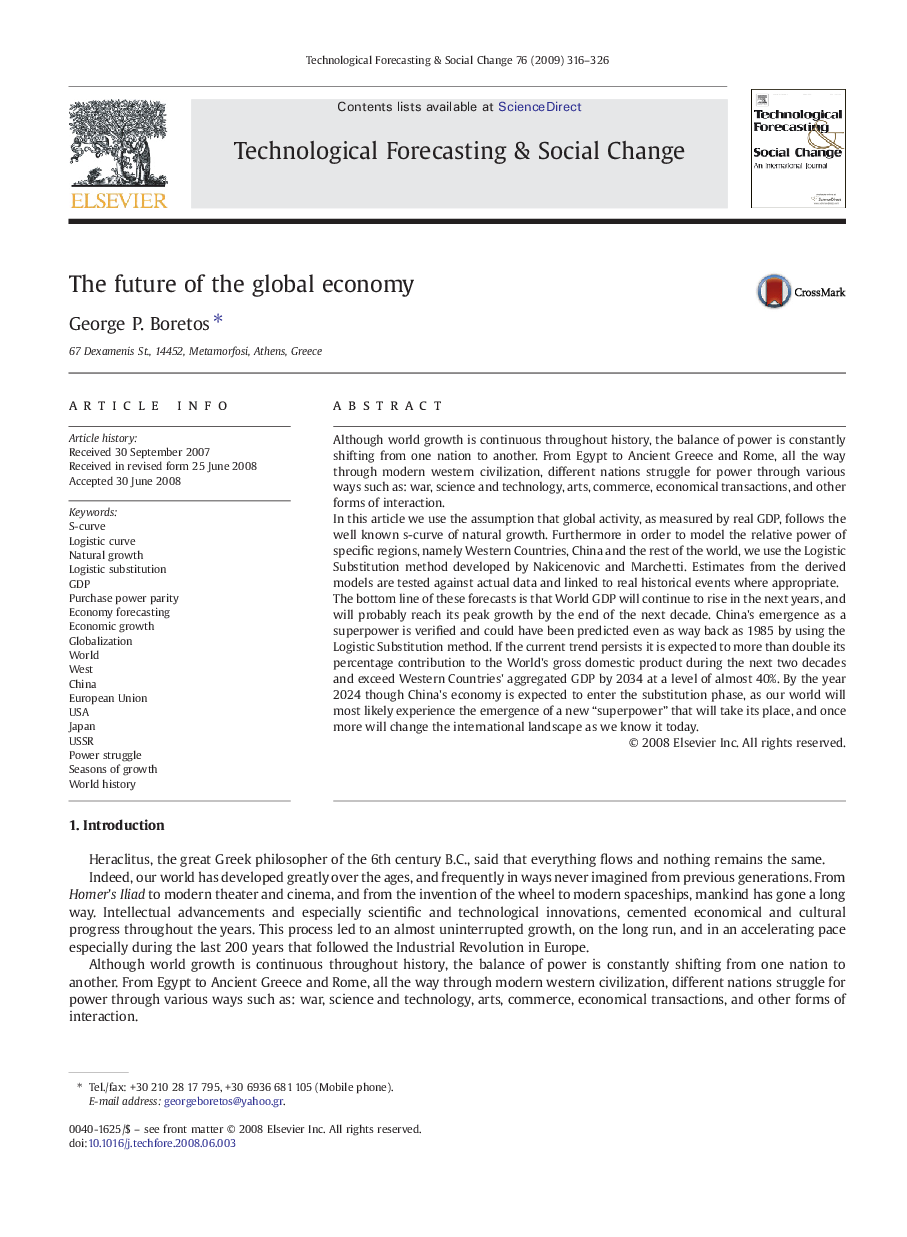| کد مقاله | کد نشریه | سال انتشار | مقاله انگلیسی | نسخه تمام متن |
|---|---|---|---|---|
| 897089 | 914879 | 2009 | 11 صفحه PDF | دانلود رایگان |

Although world growth is continuous throughout history, the balance of power is constantly shifting from one nation to another. From Egypt to Ancient Greece and Rome, all the way through modern western civilization, different nations struggle for power through various ways such as: war, science and technology, arts, commerce, economical transactions, and other forms of interaction.In this article we use the assumption that global activity, as measured by real GDP, follows the well known s-curve of natural growth. Furthermore in order to model the relative power of specific regions, namely Western Countries, China and the rest of the world, we use the Logistic Substitution method developed by Nakicenovic and Marchetti. Estimates from the derived models are tested against actual data and linked to real historical events where appropriate.The bottom line of these forecasts is that World GDP will continue to rise in the next years, and will probably reach its peak growth by the end of the next decade. China's emergence as a superpower is verified and could have been predicted even as way back as 1985 by using the Logistic Substitution method. If the current trend persists it is expected to more than double its percentage contribution to the World's gross domestic product during the next two decades and exceed Western Countries' aggregated GDP by 2034 at a level of almost 40%. By the year 2024 though China's economy is expected to enter the substitution phase, as our world will most likely experience the emergence of a new “superpower” that will take its place, and once more will change the international landscape as we know it today.
Journal: Technological Forecasting and Social Change - Volume 76, Issue 3, March 2009, Pages 316–326